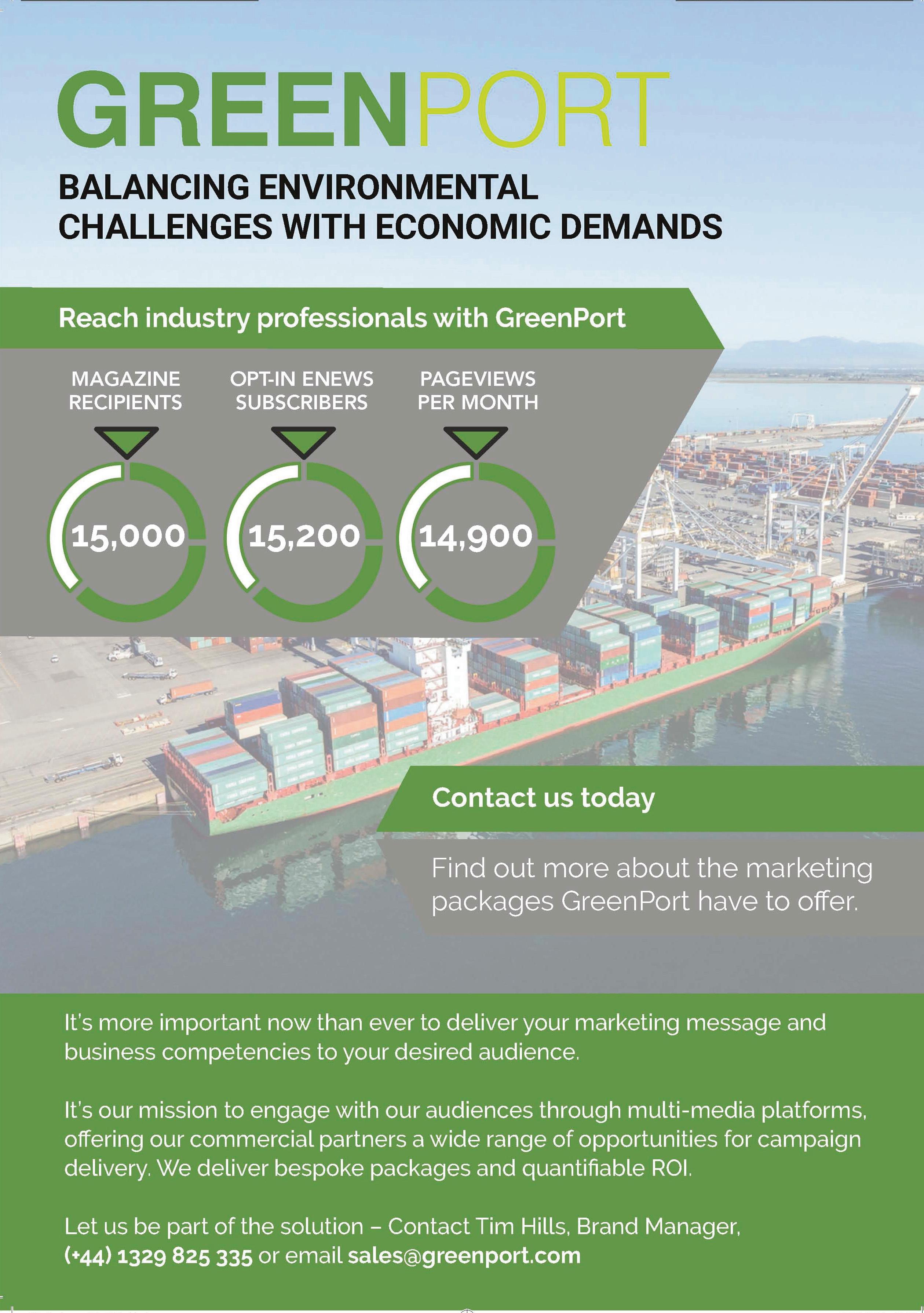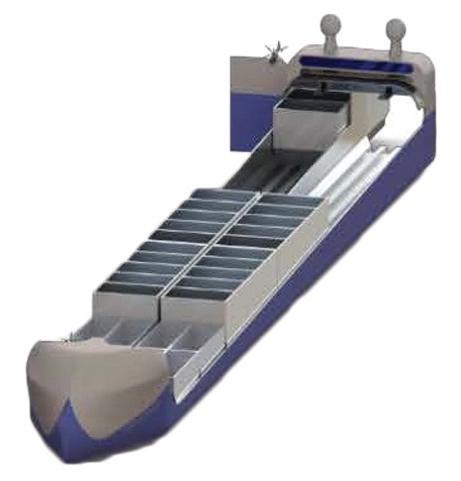
6 minute read
Cruise
PORT OF TALLINN’S SUSTAINABLE CRUISE MODEL
The Port of Tallinn, which handles an average of 10 million passengers yearly, is focusing on sustainability at its two cruise harbours, writes Michele Witthaus
As one of the biggest and best-known companies in Estonia, the Port of Tallinn is committed to ensuring that its activities contribute to the sustainable development and welfare of the Estonian economy.
“In our business development plan, we place a heavy emphasis on following the UN Sustainable Development Goals, EU and Estonian climate targets, as well as the sustainability commitments of the Green Cruise Port network,” says Sirle Arro, head of marketing, Port of Tallinn and council member of Cruise Europe.
The port's two cruise harbours, in Tallinn and Saaremaa, are no exception to this approach. “For all stakeholders in the cruise industry, one of our key challenges is the need for a sustainable model which combines the positive economic effects of the industry and its projected future growth, with careful attention to environmental concerns,” explains Ms Arro.
“This is especially important in the Baltic Sea given the fact that it is considered to be one of the most vulnerable ecosystems in the world. Another vital common challenge is balancing the interests of tourists with the normal daily lives of local populations by considering tourism's impact on the daily lives of local people.”
The Port of Tallinn is a pioneer among EU ports in providing incentives for ships to reduce emissions and sort waste. Since 2019, ships participating in the Environmental Ship Index (ESI) to work towards reducing air emissions may apply for as much as 8% discount on tonnage fees. Additionally, ships which have
8 Ingrid Berezin, head of marketing, Port of Tallinn and council
member of Cruise Europe
invested in scrubbers may discharge waste generated by scrubbers without paying additional fees.
Waste reception facilities are another key part of the Port's strategy. By 2014, Port of Tallinn had already introduced differentiated port fees for cruise vessels sorting their waste. Reduced waste fees for cruise ships apply to ships collecting garbage separately by type when at least one type of recyclable garbage (excluding mixed domestic waste) listed in MARPOL Annex V (garbage) is discharged.
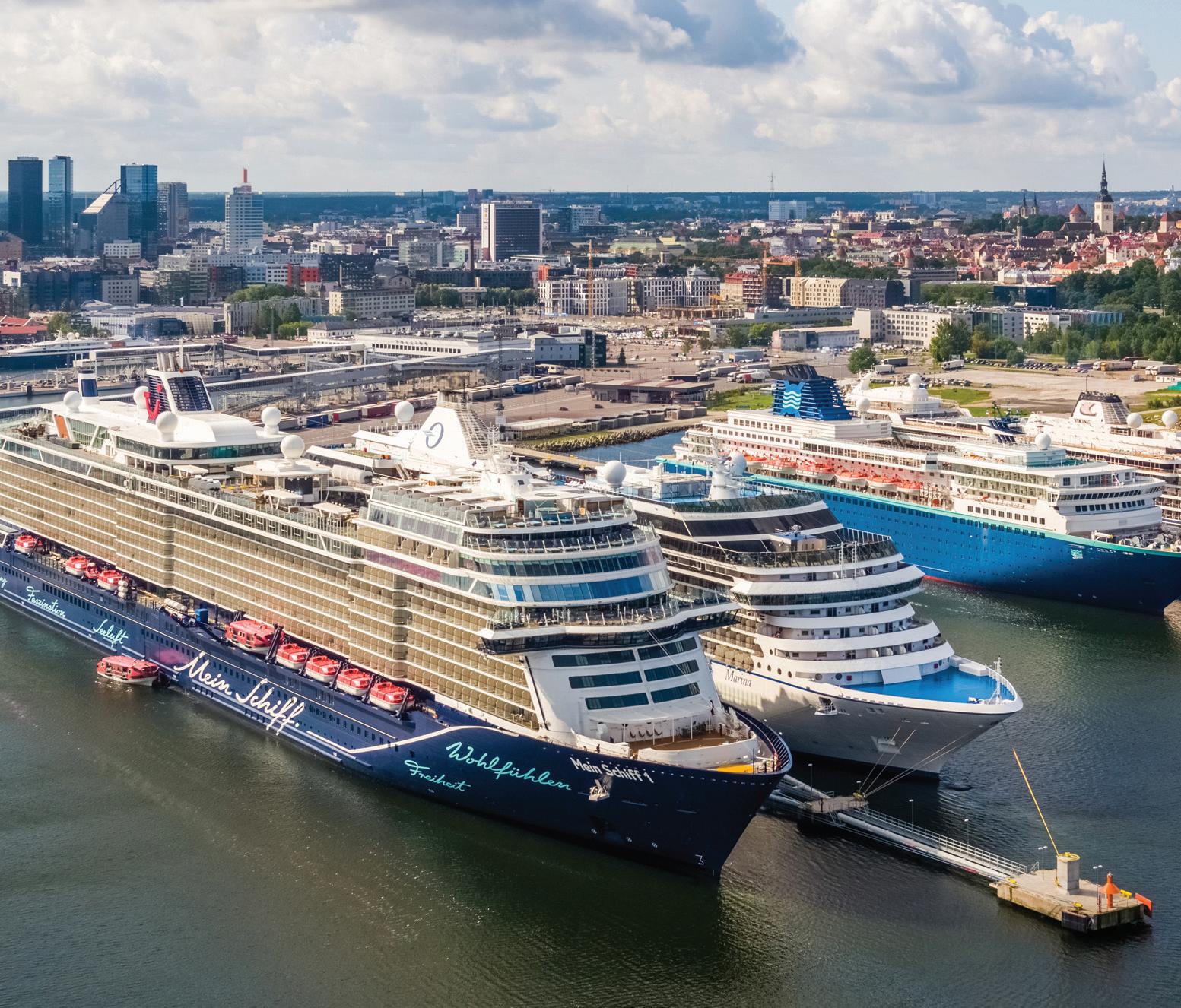
STATE-OF-THE-ART
Just a short walk from the port is Tallinn's unique Hanseatic old town, which has drawn increasing interest from cruise operators and their passengers over the years. A new cruise terminal is set to capitalise on this trend.
“To offer our guests as well as operators the best and safe available reception, a new, multifunctional and environmentally friendly cruise terminal will be opened in summer 2021,” says Ingrid Berezin, cruise manager, Port of Tallinn.
“This new terminal aims to serve as a gateway to Tallinn and open the seafront area to our guests as well as local residents. Both the interior and exterior design will use environmentally friendly solutions and materials - the building is heated by sea power and energy will also be drawn from solar panels. In addition, LED lighting, a temperature-controlled ventilation system and a natural smoke and heat extraction system will be installed, and recycled materials used in the interior (with carpets made from old fishing nets).”
The terminal will use energy efficient, ecological and sustainable solutions, suited to the Nordic climate, and will
8 Cruise ships at
berth in the Port of Tallinn
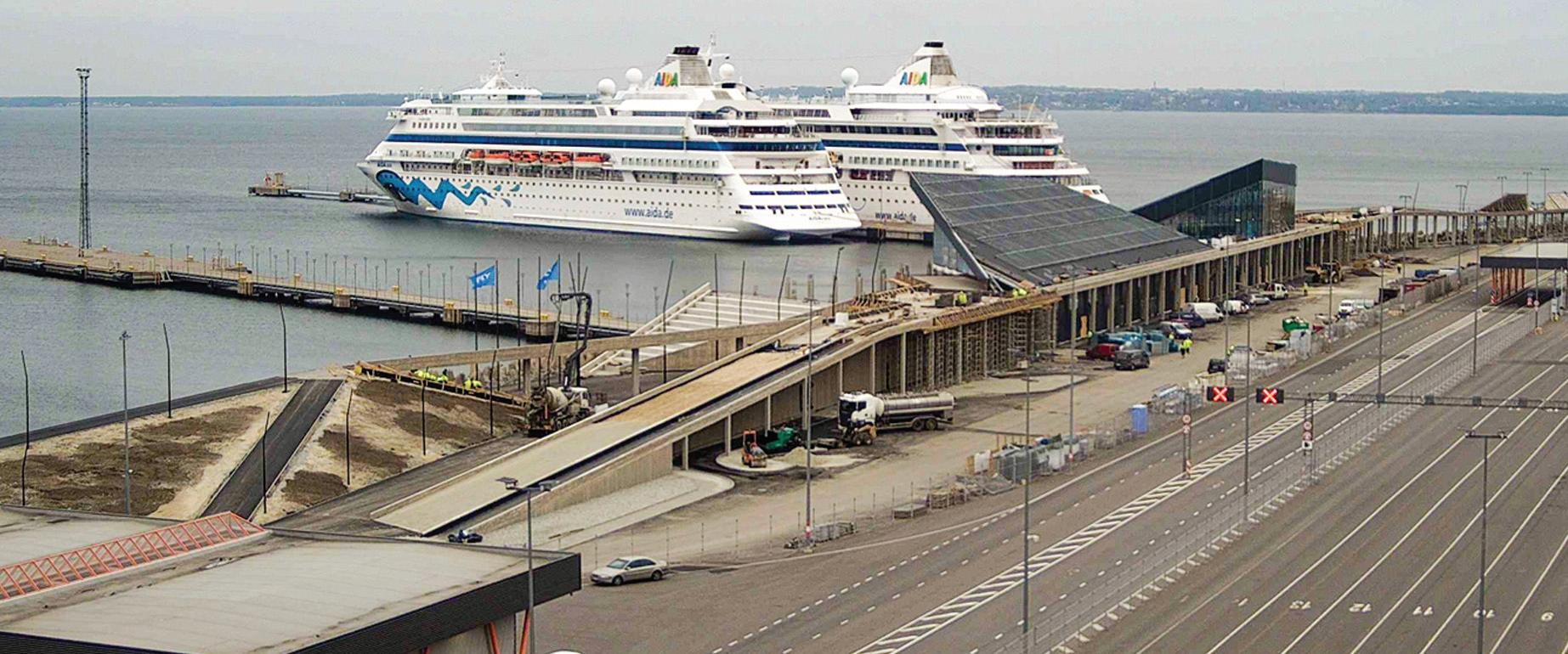
Photo: Port of Tallinn
The terminal will use energy efficient, ecological and sustainable solutions, suited to the Nordic climate and will allow the building to be operated outside the cruise season for events
allow the building to be operated outside the cruise season for events, concerts or conferences.
INDUSTRY AND COMMUNITY
“It is a proven fact that cruise tourism has a significantly positive impact on the local economy as a whole,” says Ms Arro. “One key concern for the cruise industry to address in the light of sustainable development is how to combine the interests of tourists and local people.
“New ideas must be brought to table in a dialogue with local citizens in order to find long-term sustainable solutions which recognise the cruise industry's positive economic impact without disturbing local lives.”
The Port of Tallinn has turned to the Estonian Academy of Arts to obtain academic input on the dignified and sustainable management and presentation of Tallinn's Old Town as a UNESCO World Heritage site, which will ensure further development of the Port of Tallinn's passenger line of business, as well as opportunities for increasing the number of passengers.
“Together with the City of Tallinn, we have implemented a cooperation project called 'Attractive walkway between the port and the city', to encourage shore excursion companies to organise more walking tours (instead of using buses),” says Ms Berezin. “Another aim of this project is to attract cruise tourists to visit other attractions besides the Old Town.”
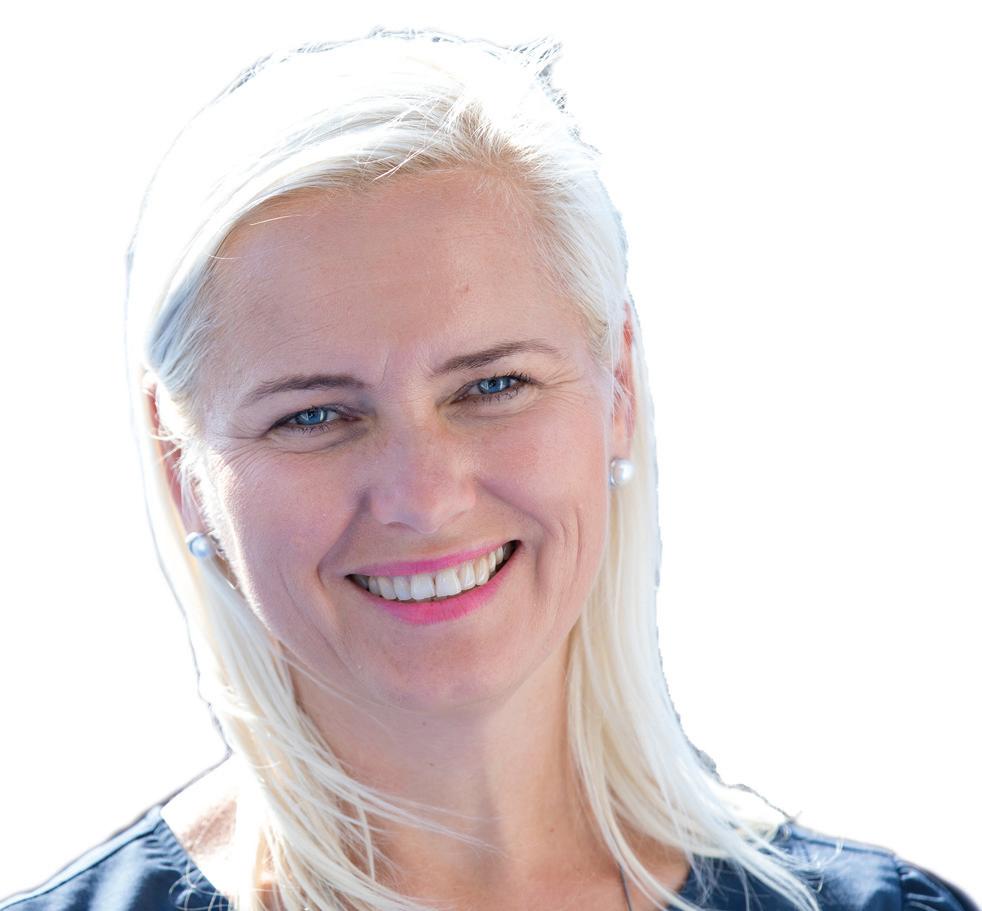
Green initiatives at the Port of Tallinn
8 Construction work
and cruise vessels
8 Sirle Arro,
cruise manager
Environmentally differentiated port dues are a key component of the Port's sustainability strategy. Starting from 2019, ships participating in the Environmental Ship Index ( ESI) may apply for the 8% discount on tonnage fees mentioned above. The new port pricing systems is aimed at encouraging shipping companies to adopt environmentally friendlier technologies and to contribute to the health of the fragile Baltic Sea ecosystem. Reducing air pollution will also have positive impact on the overall quality of life in the local community.
The port is also focusing strongly on recycling of ship generated waste. Since 2014, differentiated port fees have been available to operators, with discounts available for cruise vessels that sort their waste. A lower rate applies for cruise ships collecting garbage separately by type, in situations where at least one type of recyclable garbage (excluding mixed domestic waste) as listed in MARPOL Annex V (garbage) is discharged.
The Port of Tallinn is a pioneer amongst EU ports in providing incentives for ships that have invested in scrubbers. Any waste generated by scrubbers is accepted free of charge.
Wastewater reception via pipeline is also helping the Port to boost its green credentials. In 2016, a micro-tunnel and fixed port reception facilities for sewage reception were installed for the cruise quays, allowing them to receive up to 1,200 m3 of sewage per hour. Thanks to the new sewer system, cruise ships calling at the Old City Harbour can discharge unlimited amounts of sewage without any additional charge.
Noise mapping is another area of focus for the Port. Monitoring noise caused by cruise vessels is important for the wellbeing of people living near ports. Port of Tallinn has investigated levels of airborne noise at the Old City Harbour and has identified problematic areas and prepared an analysis of possible mitigation measures to minimise future complaints by neighbours.
Alternative fuels including truck-to-ship bunkering operations for LNG are available in Tallinn. In spring 2021 a brand new LNG bunker vessel will start to serve environmentally friendly vessels in Tallinn.
A Green Cruise Port Action Plan 2030 was handed over by the EU project Green Cruise Port's partners during the Green Cruise Port conference 'Smart cruise port developments in Baltic Sea region'. One major goal is to ensure the ability to meet sustainability requirements and reduce negative externalities caused by ports and vessel operations.
The Saaremaa harbour ( also operated by Port of Tallinn) is situated in the Natura 2000 area in Küdema Bay. The Küdema Bay Conservation area was established for the protection of species and habitats. During the construction of Saaremaa harbour, a habitat of a very rare plant species in Estonia - green spleenwort (Asplenium viride) - was found. A special species protection site has been established for this species.
